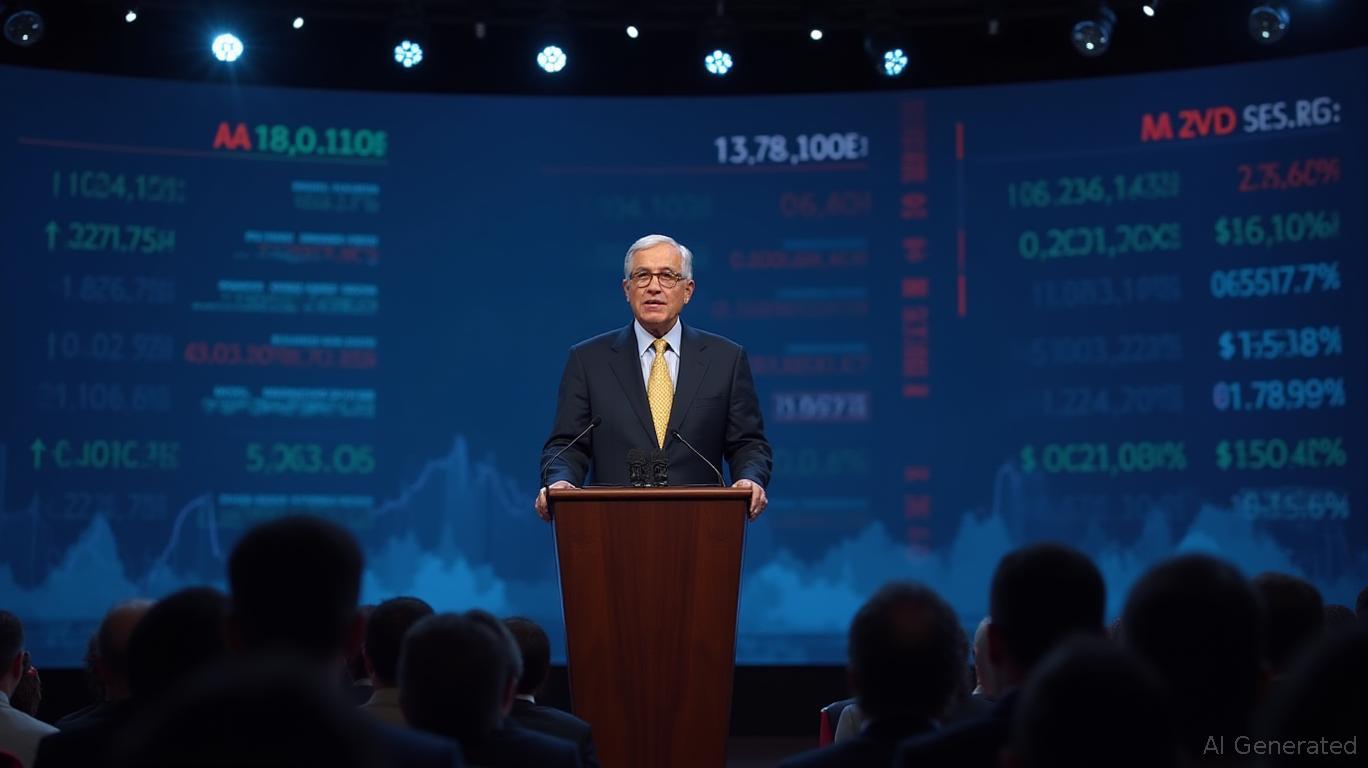Polygon and Manifold Collaborate to Create Financial Infrastructure Connecting Traditional Finance with Decentralized Finance
- Polygon Labs partners with Manifold Trading to boost institutional liquidity in DeFi via quantitative strategies and on-chain arbitrage. - Infrastructure upgrades like Rio hardfork and AggLayer framework enhance transaction speed and cross-chain interoperability for scalable capital flows. - Execution cost savings of $4,500 per $1M trade demonstrate viability of DeFi for institutions through tighter spreads and stable liquidity. - The collaboration aims to bridge TradFi standards with blockchain ecosyste
Polygon Labs has joined forces with Manifold Trading to boost institutional liquidity within decentralized finance (DeFi), with the goal of aligning traditional finance (TradFi) standards to blockchain networks. This partnership utilizes quantitative market-making and on-chain arbitrage methods to tackle liquidity fragmentation, which remains a significant barrier to institutional involvement in digital assets, according to
Polygon’s recent infrastructure enhancements, such as the Rio hardfork and Heimdall v2, have increased transaction capacity to over 5,000 TPS and shortened finality to less than five seconds. These upgrades, together with Manifold’s tactics, are anticipated to reduce discrepancies across trading venues and maintain steady two-sided liquidity—essential for handling substantial capital flows without disrupting the market, according to the Coinotag report. The AggLayer framework further integrates liquidity across chains, fostering an interoperable environment that serves both institutional and retail participants, the Coinotag report continues.

"Robust and stable liquidity is the backbone of any advanced financial system," commented Maria Adamjee, Head of Investor Relations at Polygon Labs. "Manifold’s expertise in dynamically managing spreads, order sizes, and responsiveness across various platforms makes them a strong ecosystem partner as we expand institutional-grade DeFi within Polygon," she said in remarks cited by PR Newswire. Noah Hanover, Quantitative Developer at Manifold, highlighted the company’s dedication to "maintaining market stability and depth at scale," ensuring that traders, protocols, and capital managers can operate in a dependable setting, according to the PR Newswire release.
The partnership is already showing results in reducing trading costs. For a $1 million transaction, narrowing spreads from 50 basis points to 5 basis points can yield savings of about $4,500, illustrating how advanced liquidity solutions can make DeFi markets more accessible to institutional participants, as mentioned in the PR Newswire release. This supports Polygon’s broader initiative to upgrade DeFi market infrastructure, complementing its technical improvements and the forthcoming gigagas update, which is expected to further decrease transaction finality, the PR Newswire release adds.
Polygon CEO Sandeep Nailwal emphasized the significance of the partnership in resolving liquidity fragmentation, a long-standing challenge for DeFi growth. "This collaboration embodies Polygon’s mission to lay the foundation for a decentralized financial system where liquidity, transparency, and performance rival or surpass those of traditional markets," he remarked, highlighting the platform’s dedication to encouraging enterprise and institutional engagement, according to
Industry analysts consider this development a crucial milestone in the evolution of DeFi. By merging the efficiency of decentralized technology with the operational discipline of TradFi, Polygon and Manifold seek to draw a new wave of global financial activity to blockchain. As more institutional funds enter DeFi, the partnership’s emphasis on execution standards and settlement speed sets a new standard for on-chain finance, motivating traditional institutions to explore Polygon’s network for compliant and scalable digital asset solutions, the Coinotag report observed.
Disclaimer: The content of this article solely reflects the author's opinion and does not represent the platform in any capacity. This article is not intended to serve as a reference for making investment decisions.
You may also like
XRP News Update: Pi Network Faces ISO 20022 Hurdle—Building Trust to Rival Ripple and Stellar
- Pi Network, with 50M users, joins Ripple/Stellar in ISO 20022 compliance efforts to bridge blockchain and traditional banking by 2025. - Finalizing sandbox testing for SWIFT compatibility, Pi aims to enable institutional interoperability through decentralized compliance APIs and real-time transaction verification. - Targeting emerging markets via Nigeria/Vietnam pilots and regulatory discussions in Kenya/Indonesia, Pi seeks to leverage its user base for retail/small business adoption. - Unlike Ripple/Ste

Bitcoin News Update: Optimistic Fed Stance Lifts Markets, While Analysts Remain Wary Over Trump Policy Proposals
- Fed rate cuts spark optimism in crypto and equities, with S&P 500 projected to rise 4%-10% by 2025 amid investor skepticism. - J.P. Morgan warns Fed may pause 2025 cuts to assess Trump-era policy impacts, diverging from Wall Street's easing expectations. - Bitcoin rebounds to $114,600 as ETF inflows drive institutional ownership to 12% of total supply, fueled by geopolitical stability and macro trends. - Binance's CZ backs crypto's macro role post-Trump pardon, while analysts caution Trump tariffs could

China Intensifies Crypto Restrictions to Boost Digital Yuan and Challenge Dollar Supremacy
- Beijing Procuratorate revealed a 1.1B yuan virtual currency case, highlighting China's intensified crackdown on offshore forex transactions via digital assets. - Regulatory focus shifts to curbing black-market crypto activities while advancing digital RMB (e-CNY) for cross-border trade to challenge U.S. dollar dominance. - Bank of China prioritizes e-CNY offshore applications in Hong Kong and Southeast Asia, aiming to create an independent yuan-based payment system. - Geopolitical tensions in U.S.-China

Bitcoin News Update: Interest Rate Reduction Seeks to Address Labor Market Slowdown Amid Easing Inflation
- The Fed is set to cut rates by 25 bps at its October 2025 meeting (98.3% probability), shifting focus from inflation to labor market stabilization amid softening employment data. - Private-sector indicators and truncated CPI data enabled the FOMC to act despite a government shutdown, with analysts citing "safer" conditions for easing due to weak labor markets and subdued inflation. - Bitcoin surged to $116,000 as crypto markets priced in the cut, while geopolitical risks eased with potential U.S.-China t
